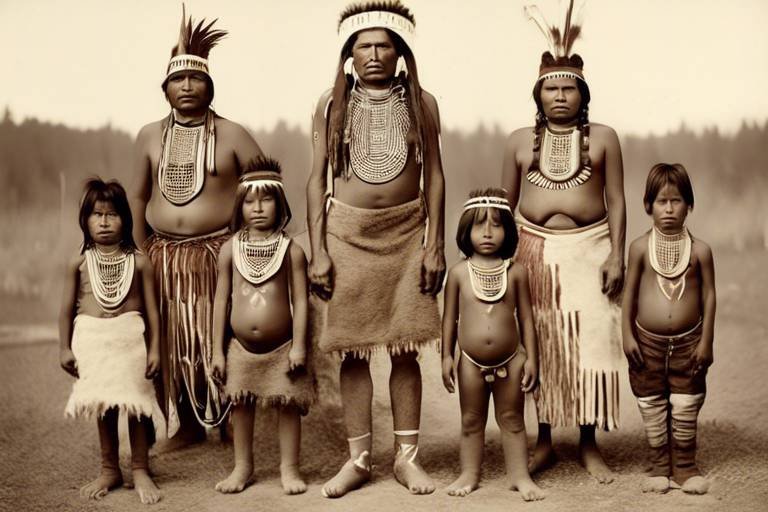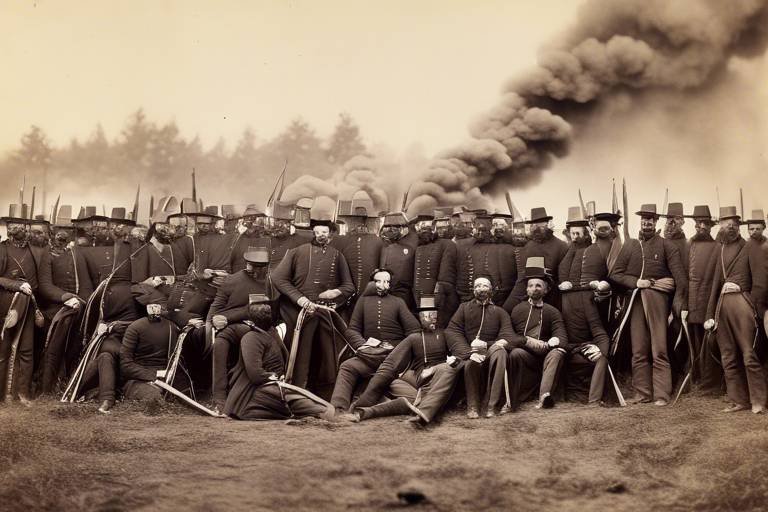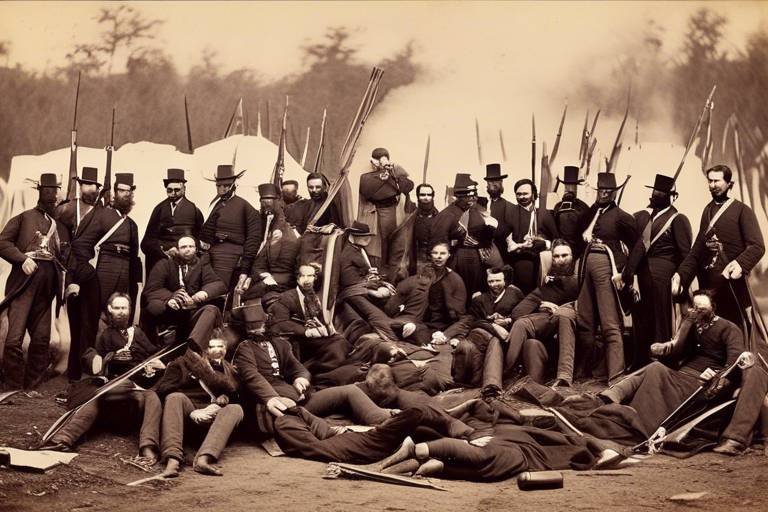The Causes of the Russian Revolution - Key Factors
Exploring the pivotal factors that led to the Russian Revolution, shaping the course of history and impacting the socio-political landscape of Russia and the world, involves delving into a complex web of interconnected causes. One of the primary drivers behind the revolutionary fervor that swept through Russia was the deep-seated socio-economic inequality prevalent in the country. The stark disparities between the opulent wealthy elite and the impoverished masses created a breeding ground for discontent and resentment among the Russian population.
Furthermore, the oppressive political repression under the autocratic rule of the Tsarist regime played a significant role in fueling revolutionary sentiments. The denial of basic rights and the stifling of political dissent pushed opposition movements underground, where revolutionary ideologies began to take root and flourish.
As if the internal turmoil was not enough, the burdens imposed by World War I added fuel to the fire. The strains of participating in a global conflict, coupled with military defeats and economic hardships, intensified the existing discontent within Russian society. These external pressures further destabilized the regime and paved the way for revolutionary upheaval.
Amidst this backdrop of social and political unrest, peasant unrest emerged as a powerful force driving the calls for change. The majority of the population, consisting of discontented peasants, endured harsh living conditions and lacked fundamental rights. This widespread dissatisfaction fueled the demand for social and political reforms, setting the stage for a radical transformation of Russian society.
Intellectual and revolutionary movements also played a crucial role in shaping the trajectory of the Russian Revolution. The rise of ideologies such as Marxism and socialism provided a theoretical framework for challenging the existing order and advocating for a new societal structure. These intellectual currents inspired and mobilized individuals to push for radical change.
One of the defining moments that galvanized opposition to the Tsarist regime was the tragic event known as Bloody Sunday. The violent suppression of peaceful demonstrators in 1905 sparked widespread protests and strikes, igniting a wave of resistance against the oppressive regime. This pivotal event marked a turning point in the revolutionary movement, setting the stage for further confrontations.
The rapid industrialization and urbanization of Russia brought about profound social and economic transformations. The growth of industries and the influx of rural migrants into urban centers created new classes of workers who faced exploitation and harsh working conditions. The discontent among the urban population intensified, adding to the simmering tensions that would eventually boil over into revolution.
Additionally, the disintegration of military discipline and loyalty within the armed forces played a critical role in undermining the Tsarist regime's authority. Mutinies and desertions among the military ranks weakened the regime's grip on power and contributed to the revolutionary fervor sweeping through Russia. The erosion of military support was a significant blow to the stability of the regime.
Lastly, the emergence of revolutionary leaders such as Lenin and Trotsky provided direction and organization to the revolutionary movements. These charismatic figures rallied support, articulated a vision for change, and mobilized the masses towards the common goal of overthrowing the existing order. Their leadership was instrumental in shaping the course of the Russian Revolution and determining its ultimate outcomes.

Socio-Economic Inequality
Exploring the pivotal factors that led to the Russian Revolution, shaping the course of history and impacting the socio-political landscape of Russia and the world.
The disparities between the wealthy elite and the impoverished masses fueled discontent and resentment, laying the groundwork for revolutionary sentiments among the Russian population. The stark contrast in wealth distribution created a breeding ground for social unrest, with the privileged few enjoying opulence while the majority struggled to make ends meet. This glaring inequality not only highlighted the injustices within Russian society but also heightened the desire for change and equality among the disenfranchised.
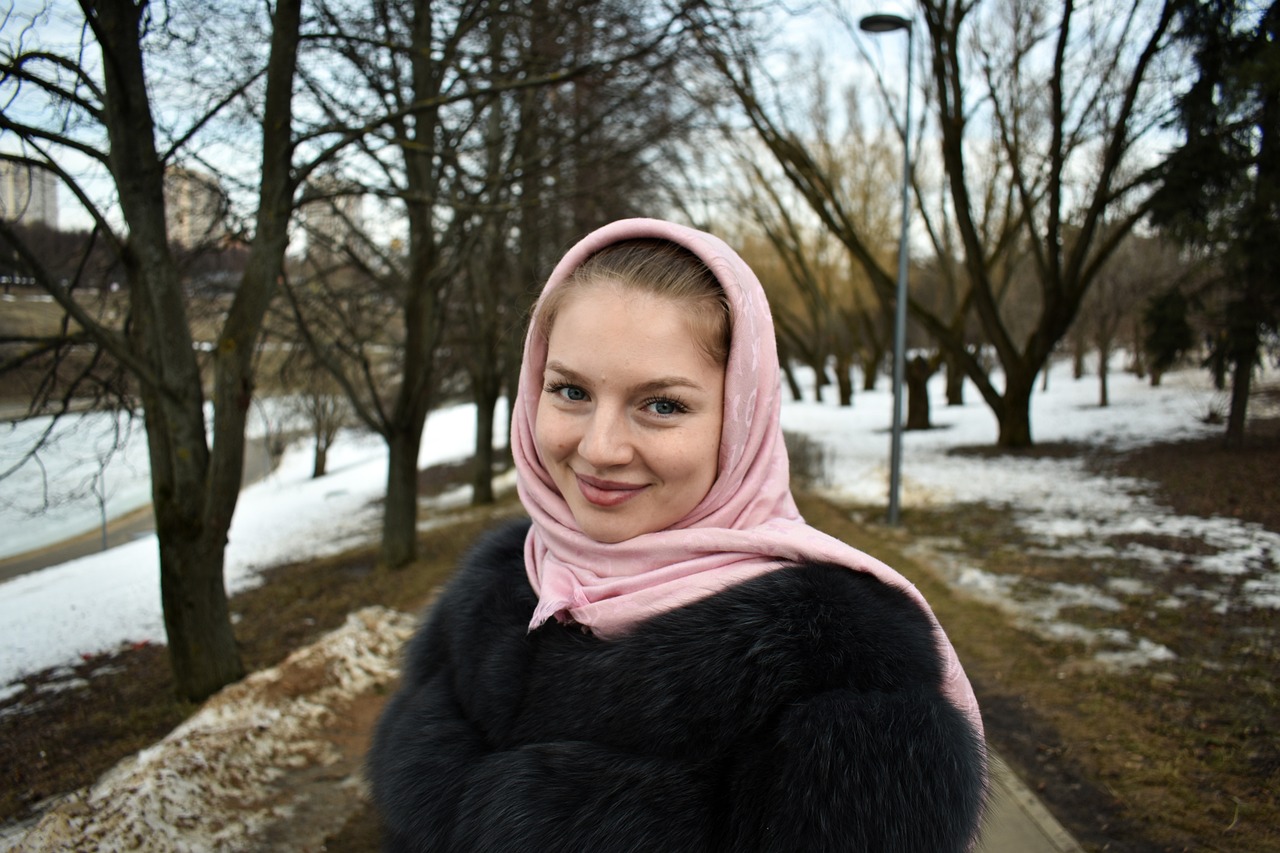
Political Repression
Political Repression played a significant role in laying the groundwork for the Russian Revolution. Under the autocratic rule of the Tsarist regime, political dissent was stifled, and basic rights were denied to the Russian population. The oppressive policies of the government triggered opposition movements and fostered revolutionary ideologies among the people. Imagine living in a society where expressing your political views could lead to imprisonment or even death. This environment of fear and suppression fueled the fire of discontent simmering beneath the surface of Russian society. The Tsar's authoritarian control not only silenced dissent but also created a pressure cooker effect, where any spark could set off a revolution.
Moreover, the lack of political freedoms and the absence of a representative government alienated the Russian population from the ruling elite. The people felt marginalized and powerless, with no avenue to voice their grievances or participate in the decision-making process. This sense of political exclusion bred resentment and a desire for change. The Tsarist regime's repressive tactics inadvertently pushed the populace towards radical ideologies and revolutionary actions. It's like trying to contain a raging river with a dam - eventually, the pressure builds up, and the dam bursts, unleashing a torrent of change.
Political repression also fueled a sense of solidarity among disparate groups within Russian society. People from different social classes and backgrounds found common ground in their shared struggle against the oppressive regime. This unity of purpose and defiance against tyranny laid the foundation for collective action and organized resistance. The Tsar's attempts to quash dissent only served to strengthen the resolve of those seeking political reform and social justice. In a way, the more the government tried to suppress dissent, the more it fueled the flames of revolution.
As political repression intensified, so did the resolve of those advocating for change. The Tsarist regime inadvertently created a breeding ground for revolutionary ideas and movements to flourish. The suppression of political freedoms became a catalyst for the revolutionary fervor that ultimately culminated in the overthrow of the centuries-old autocracy. Political repression, therefore, was not just a symptom of the underlying issues in Russian society but a crucial factor that propelled the country towards a seismic shift in its political landscape.

World War I
World War I, also known as the Great War, played a significant role in the lead-up to the Russian Revolution. The strains of participating in a global conflict of unprecedented scale and intensity took a heavy toll on Russia, both economically and socially. The war effort put immense pressure on the Russian economy, leading to inflation, food shortages, and overall hardship for the population. Military defeats on the Eastern Front further fueled discontent among the Russian people, eroding confidence in the Tsarist regime's ability to govern effectively.
The impact of World War I extended beyond the battlefield, permeating every aspect of Russian society. The war exacerbated existing social tensions and inequalities, as the burden of conflict fell disproportionately on the shoulders of the common people. The widespread suffering and sacrifice experienced during the war created a fertile breeding ground for revolutionary ideas and movements to take root and flourish.
Moreover, the war highlighted the inefficiencies and inadequacies of the Tsarist government, exposing its weaknesses and vulnerabilities to the Russian population. As the war dragged on and the hardships mounted, discontent simmered beneath the surface, waiting for the right moment to erupt into full-blown revolution. World War I acted as a catalyst, hastening the downfall of the Tsarist regime and paving the way for the seismic changes that would define the course of Russian history.

Peasant Unrest
The during the Russian Revolution was a significant factor that contributed to the overthrow of the Tsarist regime. The majority of the Russian population consisted of peasants who endured harsh living conditions, poverty, and lacked basic rights. These disenfranchised peasants became a breeding ground for discontent and dissatisfaction, fueling the flames of revolution.
The peasants, toiling in the countryside, faced oppressive conditions imposed by the landowning aristocracy. They were burdened with heavy taxes, limited access to land, and endured exploitative labor practices. The stark contrast between the impoverished peasants and the wealthy elite exacerbated the socio-economic inequality, creating a powder keg of resentment and unrest.
As the peasant discontent grew, so did their calls for social and political change. Movements advocating for land reforms, redistribution of wealth, and greater rights for the peasantry gained momentum. The peasants sought to break free from the shackles of serfdom and feudal oppression, yearning for a more just and equitable society.
The peasant uprisings spread across the Russian countryside like wildfire, with protests, strikes, and acts of defiance becoming increasingly common. The peasants, emboldened by the revolutionary fervor sweeping through the nation, demanded their voices be heard and their grievances addressed.
The served as a driving force behind the Russian Revolution, mobilizing a significant segment of the population to challenge the existing order and fight for a better future. The resilience and determination of the peasants in the face of adversity exemplified the spirit of revolution that ultimately reshaped the course of Russian history.

Intellectual Movements
Intellectual movements played a crucial role in shaping the ideological landscape of the Russian Revolution. The emergence of intellectual and revolutionary ideologies, such as Marxism and socialism, provided a theoretical framework for challenging the existing social and political order. These movements sought to address the socio-economic inequalities and injustices prevalent in Russian society, advocating for a more equitable and just system. Intellectuals and thinkers, inspired by these ideologies, contributed to the development of revolutionary ideas and strategies, influencing the course of the revolution.
Marxism, with its emphasis on class struggle and the overthrow of capitalist systems, resonated strongly with many Russian intellectuals and activists. The ideas of Karl Marx and Friedrich Engels provided a blueprint for understanding the inherent contradictions of capitalism and the potential for a proletarian revolution. Socialism, with its focus on collective ownership and social welfare, also found traction among those seeking a more egalitarian society.
Intellectual movements not only provided theoretical underpinnings for the revolution but also served as a catalyst for action. The writings and speeches of revolutionary thinkers galvanized support for anti-Tsarist sentiments and inspired individuals to take up the cause of social change. Intellectuals like Vladimir Lenin and Leon Trotsky emerged as influential leaders, guiding the revolutionary movements with their strategic vision and organizational skills.
Moreover, intellectual movements fostered a sense of unity and solidarity among disparate groups within Russian society. By offering a critique of the existing power structures and proposing alternative visions for the future, these movements helped mobilize support for revolutionary action. The intellectual ferment of the time fueled a spirit of dissent and resistance, challenging the status quo and paving the way for revolutionary upheaval.

Bloody Sunday
The events of in 1905 marked a significant turning point in the lead-up to the Russian Revolution. On this fateful day, peaceful demonstrators, including workers and their families, gathered in St. Petersburg to present a petition to Tsar Nicholas II, calling for better working conditions, higher wages, and political reforms. However, the peaceful protest quickly turned violent as the Imperial Guard opened fire on the crowd, resulting in numerous casualties and widespread outrage.
The brutal repression of the demonstrators on Bloody Sunday not only deepened the divide between the ruling regime and the discontented masses but also galvanized opposition to the Tsarist autocracy. The massacre sparked a wave of strikes, protests, and uprisings across Russia, with workers, peasants, and intellectuals uniting in their calls for change and justice. The event exposed the harsh realities of life under the Tsarist rule and fueled revolutionary fervor among the population.
Furthermore, Bloody Sunday served as a catalyst for the formation of workers' councils, known as Soviets, which played a crucial role in organizing resistance against the Tsarist regime and laying the groundwork for the revolutionary movements that would ultimately overthrow the centuries-old monarchy. The violent suppression of peaceful demonstrators on that fateful day not only symbolized the oppressive nature of the regime but also ignited the flames of revolution that would engulf Russia in the years to come.

Industrialization and Urbanization
The period of industrialization and urbanization in Russia marked a significant transformation in the socio-economic landscape of the country. As factories sprung up and cities expanded, a wave of change swept through Russian society, reshaping traditional norms and creating new opportunities and challenges.
The rapid industrial growth brought about by the modernization efforts of the late 19th and early 20th centuries led to the emergence of a new class of urban workers. These workers, often toiling in harsh conditions for meager wages, formed the backbone of the industrial revolution in Russia. The urban population burgeoned as people migrated from rural areas in search of employment and a better life.
With industrialization came a shift in social dynamics, as traditional agrarian societies gave way to urban centers teeming with a diverse array of individuals from different backgrounds. The influx of rural migrants into cities created a melting pot of cultures and experiences, fostering a sense of community among the urban populace while also highlighting the stark disparities between the haves and have-nots.
Urbanization, on the other hand, brought about a wave of infrastructural development and modern conveniences that transformed the physical landscape of Russian cities. From the construction of railways and telegraph lines to the proliferation of modern amenities such as electricity and sanitation systems, urban centers became hubs of innovation and progress.
However, the rapid pace of industrialization and urbanization also gave rise to social tensions and inequalities. The working conditions in factories were often deplorable, with long hours, low wages, and minimal safety regulations leading to widespread discontent among the labor force. The overcrowded and unsanitary living conditions in urban slums further exacerbated the plight of the urban poor, fueling resentment towards the ruling elite.
In essence, the twin forces of industrialization and urbanization in Russia during this period laid the groundwork for social unrest and revolutionary fervor. The transformation of the traditional agrarian society into a modern industrial powerhouse brought both progress and challenges, setting the stage for the tumultuous events that would ultimately culminate in the Russian Revolution.
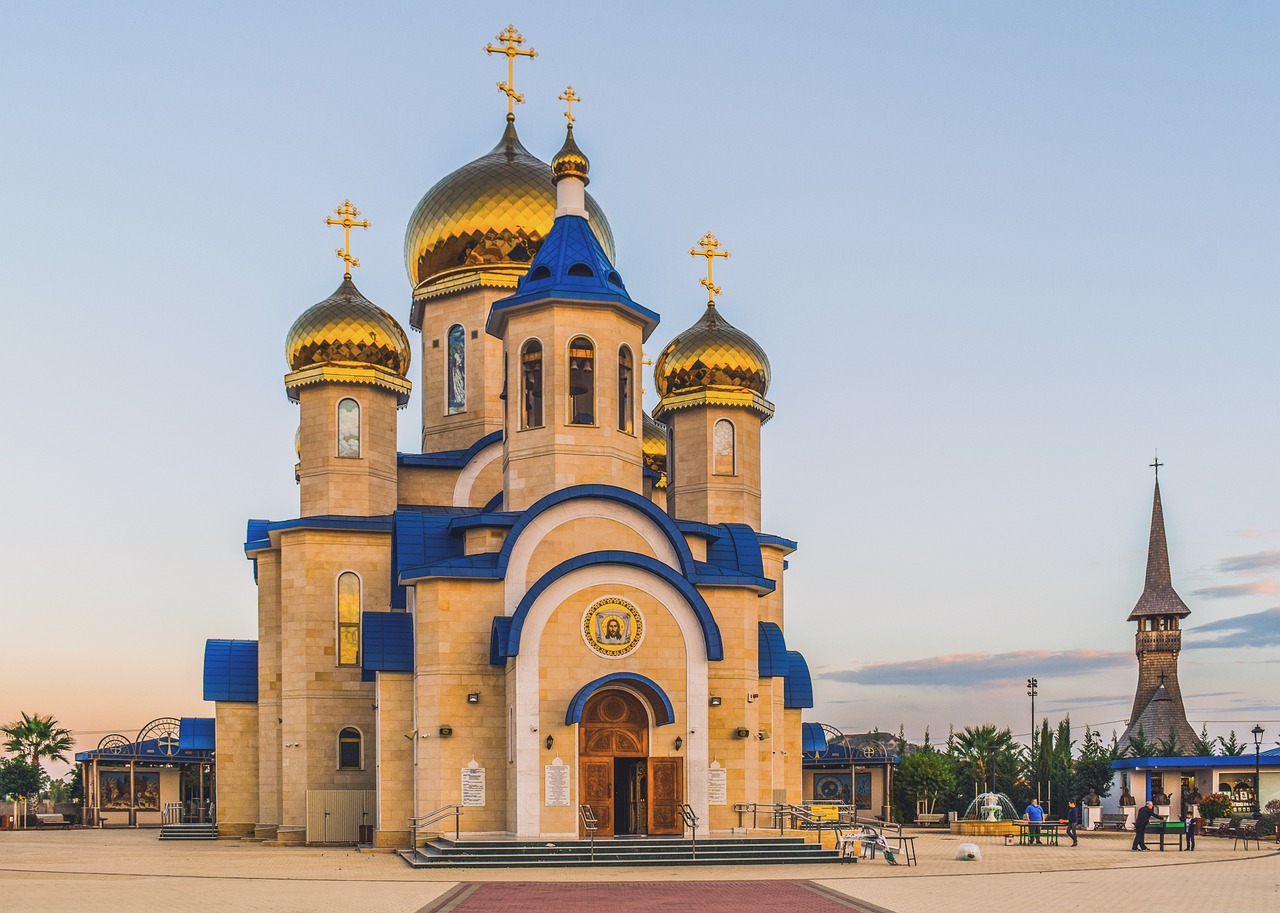
Military Mutinies
During the tumultuous period of the Russian Revolution, military mutinies played a significant role in undermining the authority of the Tsarist regime and fueling the revolutionary fervor sweeping through Russia. The disintegration of military discipline and loyalty among the armed forces marked a crucial turning point in the revolution, as soldiers began to question their allegiance to the regime and instead aligned themselves with the revolutionary movements gaining momentum.
The military mutinies were characterized by acts of defiance, desertions, and insubordination within the ranks of the army and navy. Soldiers, who were often conscripted from the peasantry and working class, found themselves disillusioned with the hardships and sacrifices demanded by the war effort. The harsh living conditions, lack of proper provisions, and high casualty rates on the frontlines further fueled their discontent and eroded their loyalty to the Tsar.
As news of revolutionary uprisings and calls for social change spread, military units began to question their role in upholding a repressive regime that denied them basic rights and subjected them to brutal discipline. Instances of mutinies erupted in various garrisons and naval fleets, with soldiers refusing to obey orders, fraternizing with revolutionary agitators, and even turning their weapons against their officers.
The impact of the military mutinies was profound, as they not only weakened the Tsarist regime's control over the armed forces but also emboldened the revolutionary movements to escalate their efforts in overthrowing the existing order. The solidarity forged among mutinous soldiers and their alignment with the revolutionary cause significantly contributed to the eventual downfall of the Tsar and the establishment of a new revolutionary government in Russia.
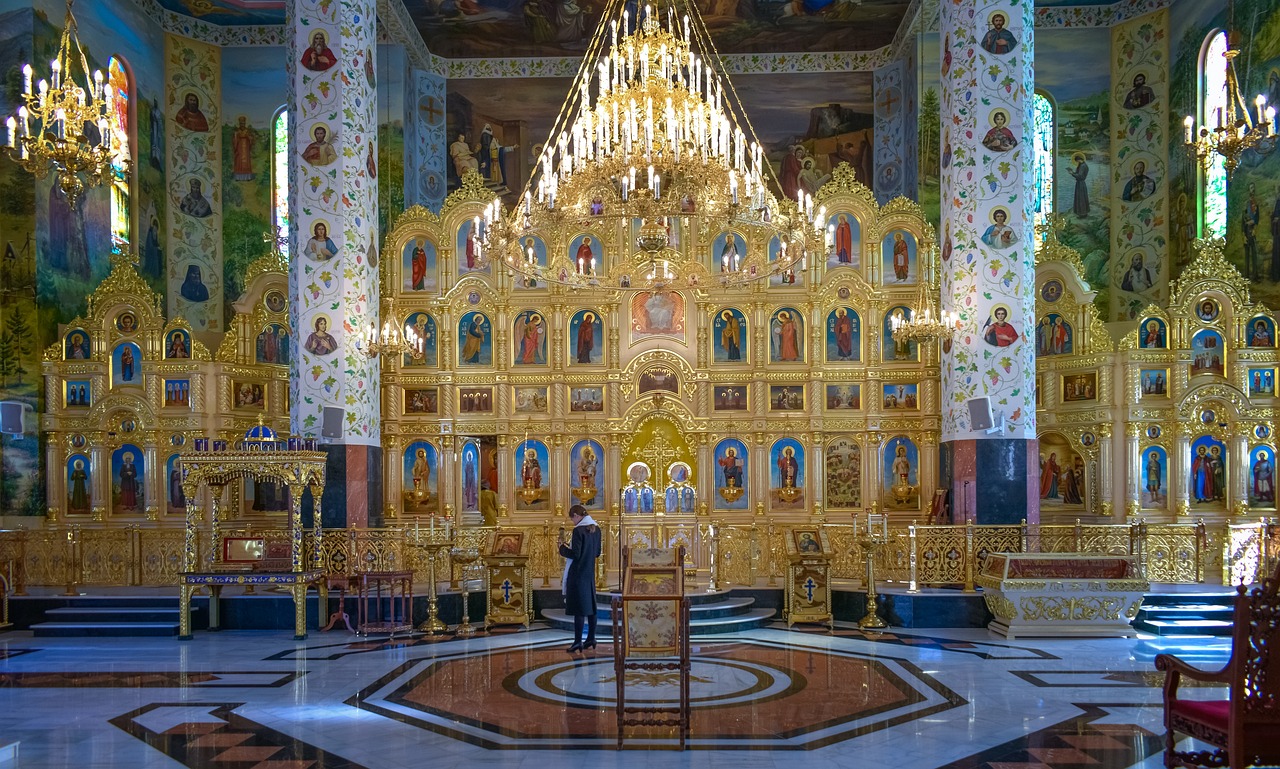
Role of Revolutionary Leaders
During the tumultuous period of the Russian Revolution, the role of revolutionary leaders played a crucial part in shaping the course of events and determining the outcomes of the uprising. Figures such as Lenin and Trotsky emerged as charismatic and influential leaders, providing direction and organization to the revolutionary movements sweeping through Russia.
Lenin, with his steadfast commitment to Marxist ideology and revolutionary principles, galvanized support for the Bolshevik Party and articulated a vision for a socialist society. His strategic acumen and unwavering determination were instrumental in guiding the Bolsheviks to power and establishing the Soviet state.
Trotsky, known for his oratorical skills and military prowess, played a key role in organizing the Red Army and defending the Bolshevik government against counter-revolutionary forces. His leadership during the Russian Civil War was marked by tactical brilliance and decisive action, securing the Bolshevik victory and consolidating their hold on power.
These revolutionary leaders not only inspired the masses with their revolutionary zeal but also provided the necessary leadership and organizational structure to effectively challenge the existing order. Their ability to mobilize support, coordinate revolutionary activities, and navigate the complexities of a rapidly evolving political landscape were essential in driving the revolution forward and shaping its ultimate trajectory.
Frequently Asked Questions
- What were the main causes of the Russian Revolution?
The Russian Revolution was primarily fueled by socio-economic inequality, political repression, the impacts of World War I, peasant unrest, intellectual movements, Bloody Sunday, industrialization, urbanization, military mutinies, and the role of revolutionary leaders like Lenin and Trotsky.
- How did socio-economic inequality contribute to the revolution?
Socio-economic inequality exacerbated tensions between the wealthy elite and the impoverished masses, leading to widespread discontent and resentment among the Russian population. This disparity in wealth distribution played a significant role in fueling revolutionary sentiments.
- What role did political repression play in the lead-up to the revolution?
Political repression under the autocratic rule of the Tsarist regime stifled dissent and denied basic rights to the Russian people, sparking opposition movements and laying the groundwork for revolutionary ideologies to take hold. The lack of political freedoms was a key factor in driving the push for change.
- How did World War I impact the Russian Revolution?
World War I placed immense strain on Russia, leading to military defeats, economic hardships, and social unrest. These factors further destabilized the regime and intensified the discontent within Russian society, contributing to the revolutionary upheaval that followed.
- Who were some of the key revolutionary leaders during the Russian Revolution?
Prominent revolutionary leaders during the Russian Revolution included figures like Lenin and Trotsky, who provided direction, organization, and ideological inspiration to the revolutionary movements. Their leadership played a crucial role in shaping the course of the revolution and its outcomes.










